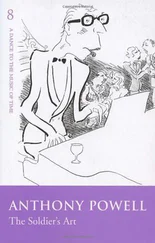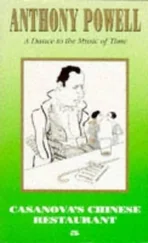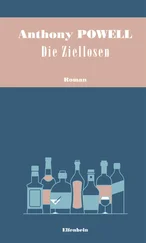Anthony Powell
A Buyers Market
THE LAST TIME I saw any examples of Mr. Deacon’s work was at a sale, held obscurely in the neighbourhood of Euston Road, many years after his death. The canvases were none of them familiar, but they recalled especially, with all kind of other things, dinner at the Walpole-Wilsons’, reviving with a jerk that phase of early life. They made me think of long-forgotten conflicts and compromises between the imagination and the will, reason and feeling, power and sensuality; together with many more specifically personal sensations, experienced in the past, of pleasure and of pain. Outside, the spring weather was cool and sunny: Mr. Deacon’s favourite season of the year. Within doors, propped against three sides of a washstand, the oil-paintings seemed, for some reason, appropriate to those surroundings, dusty, though not displeasing; even suggesting, in their way, the kind of home Mr. Deacon favoured for himself and his belongings: the sitting-room over the shop, for example, informal, not too permanent, more than a trifle decayed. His haunts, I remembered, had bordered on these northern confines of London.
Accumulations of unrelated objects brought together for auction, acquire, in their haphazard manner, a certain dignity of their own: items not to be tolerated in any inhabited dwelling finding each its own level in these expansive, anonymous caverns, where, making no claim to individual merit, odds and ends harmonise quietly with each other, and with the general sobriety of background. Such precincts have something of museums about them, the roving crowd on the whole examining the assembled relics with an expert, unselfconscious intensity, not entirely commercial or acquisitive.
On these particular premises almost every man-made thing seemed represented. Comparatively new mowing machines: scabbardless and rusty cavalry sabres: ebony fragments of African fetish: a nineteenth-century typewriter, poised uncertainly on metal stilts in the midst of a tea-set in Liverpool ware, the black-and-white landscapes of its design irreparably chipped. Several pillows and bolsters covered with the Union Jack gave a disturbing hint, that somewhere beneath, a corpse awaited burial with military honours. Farther off, high rolls of linoleum, coloured blue, green and pink, were ranged against the wall like pillars, a Minoan colonnade from which wicker armchairs and much-used pieces of luggage formed a semicircle. Within this open space, placed rather like an emblem arranged for worship, stood the washstand round which the pictures were grouped. On its marble top rested an empty bird-cage, two men-at-arms in lead, probably German, and a dog-eared pile of waltz music. In front of a strip of Axminster carpet, displayed like faded tapestry from the side of a nearby wardrobe in pitch pine, a fourth painting stood upside down.
All four canvases belonged to the same school of large, untidy, exclusively male figure compositions, light in tone and mythological in subject: Pre-Raphaelite in influence without being precisely Pre-Raphaelite in spirit: a compromise between, say, Burne-Jones and Alma-Tadema, with perhaps a touch of Watts in method of applying the paint. One of them — ripping away from its stretcher at the top — was dated 1903. A decided weakness of drawing was emphasised by that certitude — which overtakes, after all, some of the greatest artists — that none of Mr. Deacon’s pictures could possibly have been painted at any epoch other than its own: this hallmark of Time being specially attributable to the painter’s inclination towards large, blank expanses of colour, often recklessly laid on. Yet, in spite of obvious imperfections, the pictures, as I have said, were not utterly unsympathetic in that situation. Even the forest of inverted legs, moving furiously towards their goal in what appeared to be one of the running events of the Olympic Games, were manifested to what might easily have been greater advantage in that reversed position, conveying, as they did, an immense sense of nervous urgency, the flesh tints of the athletes’ straining limbs contrasting strangely with pink and yellow contours of three cupids in debased Dresden who tripped alongside on top of a pedestal cupboard.
In due course two bucolic figures in cloth caps, shirtsleeves, and green baize aprons held up Mr. Deacon’s pictures, one by one, for examination by a small knot of dealers: a depressed gang of men, looking as if they had strayed into that place between more congenial interludes on the race-course. I was not sure how this display might strike other people, and was glad, when exposure took place, that no unfriendly comment was aroused. The prodigious size of the scenes depicted might in itself reasonably have provoked laughter; and, although by that time I knew enough of Mr. Deacon to regard his painting as nothing more serious than one of a number of other warring elements within him, open ridicule of his work would have been distressing. However, all four elevations were received, one after another, in apathetic silence; although the “lot” was finally knocked down for a few pounds only, bidding was reasonably brisk: possibly on account of the frames, which were made of some black substance, ornamented with gold in a floral pattern, conceivably of the painter’s own design.
Mr. Deacon must have visited the house at least half a dozen times when I was a child, occasions when, by some unlikely chance, I had seen and spoken with him more than once; though I do not know why our paths should have crossed in this manner, because he was always reported “not to like children” so that our meetings, such as they were, would not have been deliberately arranged on the part of my parents. My father, amused by his conversation, was in the habit of referring to Mr. Deacon’s painting without enthusiasm; and when, as he sometimes did, Mr. Deacon used to assert that he preferred to keep — rather than sell — his own works, the remark usually aroused mildly ironical comment at home after he was gone. It would not be fair, however, to suggest that, professionally, Mr. Deacon was unable to find a market for his classical subjects. On the contrary, he could always name several faithful patrons, mostly business people from the Midlands. One of these, especially, spoken of as a “big iron man”—whom I used to envisage as physically constructed of the metal from which he derived his income — would, for example, come down from Lancashire once a year: always returning northward in possession of an oil sketch of Antinous, or sheaf of charcoal studies of Spartan youth at exercise. According to Mr. Deacon, one of these minor works had even found its way into the ironmaster’s local art gallery, a fulfilment which evidently gave great satisfaction to the painter; although Mr. Deacon would mention the matter in a deprecatory sort of way, because he disapproved of what he called “official art,” and used to speak with great bitterness of the Royal Academy. When I met him in later life I discovered that he disliked the Impressionists and Post-Impressionists almost equally; and was, naturally, even more opposed to later trends like Cubism, or the works of the Surrealists. In fact Puvis de Chavannes and Simeon Solomon, the last of whom I think he regarded as his master, were the only painters I ever heard him speak of with unqualified approval. Nature had no doubt intended him to be in some manner an adjunct to the art movement of the Eighteen-Nineties; but somehow Mr. Deacon had missed that spirit in his youth, a moral separateness that perhaps accounted for a later lack of integration.
He was not rich, although his income, in those days, allowed the preservation of a fairly independent attitude towards the more material side of being an artist. He had once, for example, turned down the opportunity to decorate the interior of a fish restaurant in Brighton — where he lived — on grounds that the sum offered was incommensurate with the demeaning nature of the work demanded. His means had also enabled him to assemble what was said to be an excellent little collection of hour-glasses, silhouettes, and bric-à-brac of various kinds. At the same time he liked to describe how, from time to time, in order to avoid the expense and responsibility of domestic staff, he deliberately underwent long periods of undertaking his own cooking. “I could always earn my living as a chef,” he used to say; adding, in joke, that he would look “enormously ornamental” in a white cap. When travelling on the Continent he commonly went on foot with a haversack on his back, rather than by trains, which he found “stuffy and infinitely filled with tedious persons.” He was careful, even rather fussy, about his health, especially in relation to personal cleanliness and good sanitation; so that some of the more sordid aspects of these allegedly
Читать дальше



